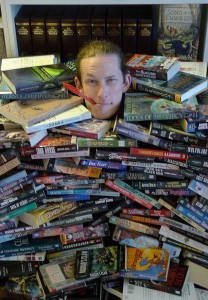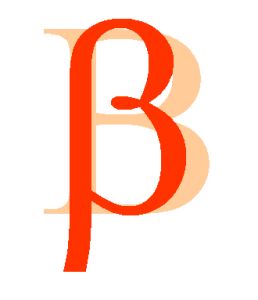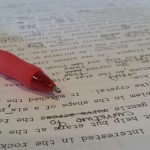
What cursed names do you reserve for your editor? We know you have them. We know you give them to us. And we don’t care. We actually kind of like it.
When you work with an editor for the first time, you’ll start to shed preconceived notions about the shape your story is in. Getting that MS back bleeding and red can be a shock. But, I swear, we only do it in self-defense. I want to help you and your MS avoid some of that unnecessary blood loss.
I see a lot of things I wish I didn’t. Every editor does. I’ve already spoken about how important it is to pay attention to your submission guidelines, and what industry standard formatting looks like, so here are a few other things on my hit list.
1. Single quotation marks.
I sometimes wish writers weren’t taught they existed. In fiction writing, the most common use you’ll have for single quotation marks is to indicate a quote within dialogue. Enclose the speaker’s dialogue in double quotation marks, then enclose the phrase they are quoting in single quotation marks. You nest them, with the double quotation marks on the outside.
“So this guy, he actually growls at me, his eyes turn red, and he tells me, ‘Give me a keg of beer.'”
Is that the only time you can use single quotation marks? No, outside fiction, it’s the convention in studies like linguistics, philosophy and theology to infer special meaning by enclosing some words in single quotation marks. They’re also used by the Associated Press for headlines.
Use double quotation marks for dialogue (obviously), around titles of short stories, magazine articles, and TV episode titles; they can be used as a style choice when you are writing a sentence and you want to refer to a word rather than use its meaning, as I will in the next item on the hit list.
Double quotation marks can also sometimes be used as scare quotes. I’m sure you’ve heard the term. All scare quotes do is indicate that a word is special in some way, usually a sarcastic or ironic author showing that he doesn’t believe or buy into the meaning.
And I see . . . hell, everybody sees double quotation marks used incorrectly in this way all the time. Check this out.
2. Mixing up “a” and “the.”
I see this more than a little. And I can see you shaking your head already. You totally don’t do that, that’s dumb. Well, not so fast, Speedy. I see it a lot for a reason.
These words infer very different things. Only use “the” when referring to something or someone that has already been introduced to your story, and “a” for something new to the story.
For example, when introducing a new element, like a big, slashy red pen, upon the first mention of that red pen, it is always, “a” red pen, not “the” red pen. “The” references a specific red pen, and since the red pen has never appeared nor been mentioned in your story thus far, the characters couldn’t possibly know to which red pen you were referring when you said “the red pen.” In this instance, it would be “a red pen.”
Thereafter, since the red pen has now been introduced, and your readers and your characters know about it, it would be “the red pen.”
3. Paragraph breaks.
Give them to us. New paragraphs are important for your readers. They tell when you’re switching time, place, topic or speaker, and they break the page up so it is not a solid block of words.
Don’t downplay the psychological impact of how the writing actually looks. It is intimidating and discouraging to see huge blocks of uninterrupted text, and you don’t want your reader to be discouraged before they even start to read, right?
Paragraphs create white space on a page and that white space provides a visual and mental break for readers — like coming up for air. New thought, new paragraph. It is often a good idea to separate lines of dialogue into new paragraphs; and the same goes for thoughts.
There are a few standard times to make a new paragraph:
a. when you start in on a new topic,
b. when a new person begins to speak,
c. when you skip to a new place,
d. when you skip to a new time, &
e. when you want to produce a dramatic effect.
Some of these breaks may require a new scene, or even a new chapter, but at the least, give us a new paragraph.
4. Action sequences.
Action is usually the most difficult for writers to become proficient in. Time and again the manuscripts I work on will have the heaviest line editing concentrated in action scenes. I start hacking harder when characters do, so here are some rules of thumb.
Less is more. Use fewer words; more words merely gunk up the flow and muddy clarity. Action should be sharp and fast, your words should suit that.
Use only the actions that are necessary to show what is going on and no more. If there is no reason to include an extra dodge, sway, swing, leap, scream or twist, then don’t. Each movement should build off the last and serve to increase the stakes and the tension until the climax and resolution. If it doesn’t, cut it.
Save your big, dynamic action verbs like “slam,” or “jolt,” or “roar” for action scenes. You can only use each a finite amount of times, so save them for when they fit the scene and when they’ll have the most impact.
Anything that slows the tempo doesn’t belong. Tempo is the level of activity within a scene via dialogue, action or a combination of the two. Together with rhythm (the way scenes interact with one another), tempo dictates the pacing of your story.
Pay close attention to that pacing too. Is your story filled with action scene after action scene after action scene? The whole point of an action scene is to get the blood moving, create tension, make readers fear for your characters. It’s easy to make your readers numb by overdoing it. If your tension is getting stale, it is because you’re hitting the same emotional beat too many times. Too much action — but this can be applied to any kind of scene, any emotional beat.
When that’s happening you have to use an opposing beat. So change it up and throw in some romance or mystery. Or mysterious romance. Give readers a rest so they can step back and appreciate your action again. To put it another way, if you love bacon (and you do), and so all you eat is bacon (and you might), you’re going to grow tired of bacon . . . this is a bad example.
With that, I close my hit list to you for now, and leave you to your own devices. But I’ve got my eye on you. My big, bright, baleful, red eye. Go ahead, call me all the bad names you want. I’m here for you.


